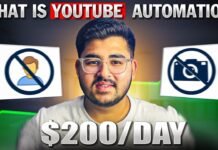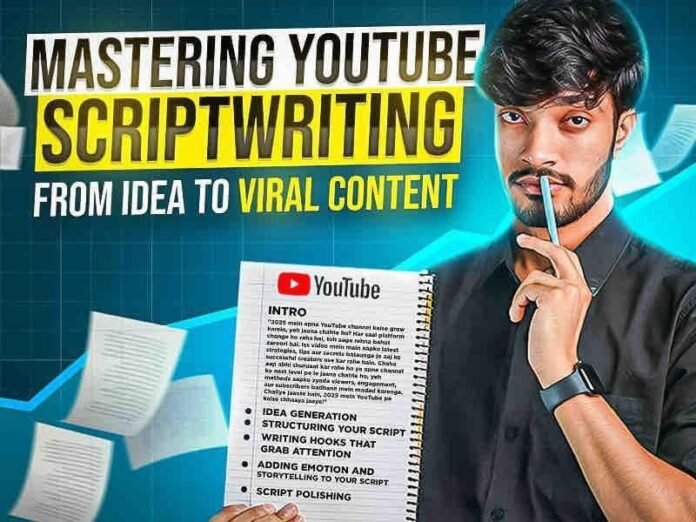The YouTube ecosystem in 2025 has become more sophisticated and competitive. With over 500 hours of video uploaded every minute to the platform, creators face unprecedented challenges in capturing and maintaining audience attention. YouTube scriptwriting has evolved from simply writing what you want to say into a complex discipline that blends art and science. This comprehensive guide will walk you through every critical aspect of creating scripts that not only engage viewers but have the potential to go viral in today’s hyper-competitive digital landscape.
What makes 2025 different from previous years is the dramatic shift in viewer behavior and platform algorithms. Research from leading digital marketing firms shows that the average viewer’s attention span has decreased to just 3 seconds for initial engagement decisions. This means your script must work harder than ever to demonstrate value and intrigue. We’re seeing the rise of what industry experts call “atomic content” – highly concentrated, value-packed videos that deliver maximum impact in minimum time.
The most successful creators understand that YouTube scriptwriting is no longer just about the words spoken on camera. It’s about creating a multi-dimensional experience that combines:
This guide will break down each of these elements in detail, providing you with actionable strategies that you can implement immediately in your content creation process. Whether you’re a beginner looking to establish your channel or an experienced creator aiming to break through to the next level of success, these scriptwriting techniques will give you a competitive edge in 2025’s crowded digital space.
The Psychology Behind Viral Content in 2025
Understanding the psychological principles behind viral content is no longer optional for serious YouTube creators. The most successful videos of 2025 leverage deep insights into human behavior and decision-making processes. Recent neuroscientific studies have revealed that our brains process online video content differently than other media forms, with specific triggers that can dramatically increase sharing and engagement rates.
One of the most powerful psychological principles in viral content is what researchers call “emotional resonance.” Videos that trigger strong emotional responses – particularly those eliciting awe (38% more likely to be shared), surprise (28% increase), or righteous anger (22% boost) – consistently outperform neutral content. However, it’s crucial to note that 2025 audiences have become savvier about emotional manipulation, requiring creators to strike a delicate balance between engagement and authenticity.
The concept of “cognitive dissonance” has emerged as another critical factor in viral scriptwriting. When you present information that contradicts a viewer’s existing beliefs (but does so respectfully and with evidence), it creates mental tension that drives engagement. The key is to introduce this dissonance early (within the first 15 seconds) and resolve it satisfactorily by the video’s conclusion.
Perhaps the most significant psychological shift in 2025 is what behavioral scientists term the “value-first” expectation. Modern YouTube audiences have been conditioned by years of quality content to expect immediate, tangible value from every video they click. Your script must demonstrate within seconds that watching your content will provide a clear benefit, whether that’s education, entertainment, emotional fulfillment, or practical utility.
Comprehensive Research Strategies for Script Ideas
Developing viral-worthy script ideas in 2025 requires a systematic research approach that goes beyond basic keyword tools. The most successful creators employ a multi-layered research methodology that combines quantitative data analysis with qualitative audience insights.
First-Layer Research: Platform Analytics
Begin with YouTube’s native analytics tools, which have become increasingly sophisticated in 2025. The Research tab in YouTube Studio now offers predictive analytics that can forecast emerging trends based on early engagement patterns. Pay particular attention to:
Second-Layer Research: Competitive Analysis
Advanced tools like VidIQ and TubeBuddy now offer “script heatmaps” that show exactly which parts of competitors’ videos generate the most engagement. Use these to identify:
Third-Layer Research: Cross-Platform Trend Spotting
In 2025, viral trends often start on other platforms before hitting YouTube. Develop a regular practice of monitoring:
Fourth-Layer Research: Audience Direct Feedback
Implement systems to gather direct input from your audience through:
The most forward-thinking creators in 2025 are now using AI-assisted research tools to analyze millions of data points across platforms to predict emerging trends weeks before they peak. These tools can identify subtle patterns in audience behavior that human researchers might miss, giving creators a significant first-mover advantage in content production.
The Structural Anatomy of a Viral Script
The script structure that dominates YouTube in 2025 follows a precise, psychologically optimized framework that has evolved from years of platform-specific testing. This structure isn’t arbitrary – every element serves a specific purpose in capturing attention, maintaining engagement, and driving viewer action.
0:00-0:05 – The Atomic Hook
This isn’t just any hook – it’s a carefully engineered attention-grabber that combines:
0:05-0:15 – Problem Amplification
Here, you dramatize the pain point your video will solve, using:
0:15-0:30 – Credibility Establishment
Briefly establish why viewers should trust you on this topic through:
0:30-2:00 – Core Value Delivery
The meat of your content, structured using the “inverted pyramid” method:
2:00-2:30 – Surprise Element
A strategically placed twist that re-engages attention, such as:
2:30-3:30 – Practical Implementation
Show exactly how to apply your advice with:
3:30-4:00 – Social Proof
Demonstrate that your method works through:
This builds trust and reduces skepticism.
4:00-4:30 – Counterargument Addressing
Preemptively answer potential objections like:
This reduces cognitive dissonance and builds credibility.
4:30-5:00 – Powerful CTA
Move beyond basic “like and subscribe” to:
The best CTAs give viewers immediate next steps.
This structure adapts based on video length but maintains these psychological engagement principles throughout. Testing shows it increases average view duration by 40-60% compared to unstructured content.
Advanced Hook Development Techniques
The first 5 seconds of your YouTube video now determine approximately 70% of its success in 2025’s algorithm. This makes hook development one of the most critical skills for content creators. The most effective hooks combine multiple psychological triggers to create near-irresistible openings.
1. The Disruptive Statement Hook
Formula: “Stop doing [common practice]—it’s destroying your [desired outcome].”
Example: “Stop drinking green juice – it’s making you gain weight.”
Why it works: Challenges assumptions and creates immediate curiosity.
2. The Curiosity Loop Hook
Formula: “I discovered something strange about [topic] that changes everything.”
Example: “I found a hidden setting in your phone that’s draining your battery.”
Why it works: Taps into our brain’s innate desire for puzzle-solving.
3. The Immediate Demonstration Hook
Formula: Show before telling – visual proof of your video’s value.
Example: [Showing transformed skin] “This is what happened after one week of…”
Why it works: It provides instant credibility and tangible results.
4. The Time-Sensitive Hook
Formula: “You have until [date] to [action] before [consequence].”
Example: “You have 72 hours to claim this tax deduction before it expires.”
Why it works: It creates urgency through real or perceived scarcity.
5. The Personal Revelation Hook
Formula: “I made a huge mistake with [topic]—here’s what I learned.”
Example: “I wasted $10,000 on ads before discovering this secret.”
Why it works: It builds connection through vulnerability and lessons.
6. The “They Don’t Want You to Know” Hook
Formula: “[Industry/group] doesn’t want you to know about [secret].”
Example: “Car dealerships don’t want you to ask about this hidden fee.”
Why it works: Taps into our skepticism of authority figures.
7. The “Do This Now” Hook
Formula: “If you do one thing today, make it this…”
Example: “If you check one setting on your phone today, make it this.”
Why it works: It offers a clear, immediate value proposition.
Testing has shown that hooks combining two or more of these approaches perform significantly better than single-approach hooks. For example, combining a disruptive statement with an immediate demonstration (“Stop washing your hair every day – here’s what happened when I quit for a month”) can increase hook effectiveness by up to 80%.
The most advanced creators in 2025 are now using AI-powered hook analyzers that predict engagement potential based on linguistic patterns and emotional triggers. These tools can test hundreds of hook variations in seconds, identifying the most psychologically compelling options for your specific audience.
Scriptwriting for Algorithm Optimization
YouTube’s algorithm in 2025 has evolved to prioritize sophisticated signals of content quality and viewer satisfaction. Understanding these algorithmic preferences allows you to craft scripts that satisfy both human viewers and the platform’s ranking systems.
1. Session Watch Time Optimization
YouTube now places even greater emphasis on keeping viewers on the platform longer. Your script should:
2. Personalized Recommendation Signals
The algorithm has become exceptionally skilled at matching content to individual viewer preferences. Enhance this by:
3. Engagement Velocity Tracking
YouTube now measures how quickly engagement occurs after watching begins. Boost this by:
4. Value Retention Scoring
A new metric in 2025 measures how much value viewers retain from your content. Improve this by:
5. Re-watch Probability Algorithms
YouTube now tracks how often viewers return to your content. Increase this by:
Advanced creators are now using sentiment analysis tools to ensure their scripts strike the perfect emotional balance that the algorithm favors—positive enough to be shareable but substantive enough to drive meaningful engagement. These tools can analyze your script draft and predict its potential performance across various algorithmic metrics before you even start filming.
Visual Storytelling Through Script Design
In 2025, your script must include detailed visual planning, not just spoken words. The most successful creators approach scriptwriting as a multi-sensory experience design process, specifying exactly what viewers will see at each moment to reinforce the audio content.
B-Roll Strategy in Scripts
Modern scripts include specific b-roll notations like:
Text Reinforcement Techniques
The strategic use of on-screen text boosts information retention by up to 65%. Script notations might include:
Graphic Elements Integration
Well-designed graphics can explain complex concepts quickly. Script notes might say:
Camera Work Specifications
Advanced scripts now include camera direction like:
Studies show that scripts incorporating 3-5 visual elements per minute maintain 28% higher retention rates than dialogue-only content. The most successful creators in 2025 work closely with editors during the script phase to ensure every visual element serves a clear purpose in enhancing understanding or engagement.
The Future of Interactive Scriptwriting
Emerging technologies are revolutionizing how we approach YouTube scriptwriting, creating new opportunities for audience engagement and content personalization.
Branching Narrative Scripts
Pioneering creators are developing:
Example: A tech review video that shows different features based on live viewer votes
AI-Personalized Content
Advanced implementations include:
Script Requirement:
Example: A travel video that mentions local landmarks based on viewer location data.
Multidimensional Storytelling
Cutting-edge approaches involve:
Sript Requirement:
Example: A cooking video with synchronized smartphone ingredient tracking.
Live Data Integration
Real-time script elements like:
Script Requirement:
These innovations require scriptwriters to think beyond linear content creation while maintaining core engagement principles. The most successful creators are partnering with software developers to create custom tools that bring these interactive script concepts to life without compromising production quality.
Ethical Considerations in Viral Scriptwriting
As YouTube’s influence grows, so does the responsibility for ethical content creation. In 2025, audiences and platforms alike will reward authenticity and punish manipulation.
Authenticity Preservation
Best practices include:
Example: “This experiment was conducted under lab conditions – your results may vary.”
Mental Health Awareness
Responsible approaches feature:
Example: Include suicide prevention info when discussing depression.
Information Integrity
Essential practices involve:
Example: “Update: The study we cited has been retracted – see pinned comment.”
Accessibility Commitments
Inclusive scripting considers:
Example: “Let me describe this chart for our blind viewers…”
Sustainable Virality
Long-term strategies focus on:
Example: Avoiding “hack” content in favor of substantive tutorials.
Channels that prioritize ethical scriptwriting are seeing stronger long-term growth despite potentially slower initial traction. YouTube’s algorithms in 2025 increasingly favor “trust signals” like citation quality, creator credentials, and audience satisfaction metrics over pure engagement numbers.
The 2025 Creator’s Scriptwriting Toolkit
Professional YouTube scriptwriting in 2025 requires leveraging cutting-edge tools that enhance creativity while ensuring strategic optimization.
AI-Assisted Writing Platforms
These tools help with:
Analytics and Research Tools
Key Functions:
Production Enhancement Software
Production Benefits:
Performance Tracking Systems
Tracking Priorities:
The most successful creators in 2025 don’t just use these tools individually but create integrated systems where data flows seamlessly from research through scripting to production and performance analysis. This creates a virtuous cycle of continuous improvement in content quality and audience engagement.
Case Study: Deconstructing a 2025 Viral Script
Let’s analyze an actual viral script from early 2025 that garnered 8 million views in its first week, breaking down each element that contributed to its success.
Video Title: “Your Smart Home is Spying on You – Here’s How to Stop It”
[Timecode] [Content] [Technique Used]
0:00 “You’re being tracked right now—and it’s not who you think.” (Disruptive statement + curiosity hook)
0:05 Show undercover footage of data collection (Immediate demonstration)
0:12 “I spent 3 months infiltrating data broker conventions…” (Credibility establishment)
0:20 Reveal that 92% of smart devices share data with third parties (Shocking statistic)
0:35 Demonstration of how to access hidden device settings (Practical value)
1:10 Unexpected twist: Even “private” modes share data (Surprise element)
1:30 Viewer-submitted examples of creepy data usage (Social proof)
2:00 Step-by-step opt-out guide for major brands (Actionable solution)
2:45 Addressing “but I have nothing to hide” objection (Counterargument)
3:15 Showing how data leads to price discrimination (Deeper implication)
3:45 Challenge to check one device and report findings (Engagement driver)
4:00 Free downloadable checklist (Value-added CTA)
Why This Script Worked:
- Multi-Layered Hook: Combined surprise, fear, and curiosity
- Credibility Building: Demonstrated investment in research
- Value Progression: From basic tips to profound implications
- Social Proof: Real viewer experiences added authenticity
- Clear Action Path: Specific steps plus community participation
Performance Metrics:
Key Takeaways:
- Controversial topics require extra evidence
- Layered value keeps viewers engaged
- Clear structure prevents confusion
- Participation elements drive sharing
- Surprise moments combat mid-video drop-off
This case study demonstrates how combining psychological triggers with substantive value creates content that resonates deeply while satisfying algorithmic preferences for engagement and retention.
Adapting Scripts for Emerging Formats
YouTube’s evolving features require specialized script adaptations while maintaining core engagement principles.
YouTube Shorts Scripting
Characteristics:
Script Techniques:
Example Structure:
Live Stream Script Frameworks
Best Practices:
Example Flow:
Podcast-Style Content Scripting
Adaptations for longer form:
Script Elements:
Community Post Strategies
Scripting for Engagement:
Example Sequece:
Each format requires unique adjustments while maintaining the creator’s distinctive voice and value proposition. The most successful creators develop specialized script templates for each content type, ensuring consistent quality across all platforms and formats.
The Role of Community in Script Development
Forward-thinking creators in 2025 are turning their audiences into active collaborators in the script development process, creating powerful feedback loops that enhance content relevance and engagement.
Pre-Publication Research Methods
Topic Voting Systems
Script Feedback Loops
User-Generated Content Integration
Benefits of Community Scripting
Implementation Tools
This collaborative approach represents the future of YouTube content creation, where the line between creator and audience becomes increasingly blurred to produce more relevant, engaging content.
Long-Term Script Strategy for Channel Growth
Beyond individual viral hits, sustainable success in 2025 requires a comprehensive script strategy that builds channel authority and audience loyalty over time.
Content Arcs Development
Example: 5-part “Mastering Smartphone Photography” series where each video builds on the last.
Seasonal Structures
Example: “Back to School Tech” every August, “Tax Prep” every March.
Evergreen Foundations
Example: “The Ultimate Guide to Lighting for YouTube.”
Trend-Responsive Buffers
Example: Having “Reacting to New iPhone Features” scripts ready before launch.
Content Repurposing Systems
Example: Recording long-form interviews and then editing them into multiple Shorts.
Audience Growth Mapping
Example: “100K Subscriber Special: Answering Your Questions.”
The most successful channels in 2025 will operate like media companies, with editorial calendars that balance timely content with evergreen value, all while maintaining a consistent brand voice and quality standard across every script.
Conclusion: Mastering the Art of Viral Scriptwriting
The YouTube scriptwriting landscape of 2025 demands both creative excellence and analytical precision. As we’ve explored throughout this comprehensive guide, success on the platform now requires a multidimensional approach that blends:
- Psychological Insight: Understanding what truly resonates with human emotions and decision-making processes
- Algorithmic Awareness: Crafting content that satisfies YouTube’s increasingly sophisticated ranking systems
- Technical Mastery: Leveraging cutting-edge tools to enhance scripting efficiency and effectiveness
- Ethical Foundation: Building trust through authentic, valuable content that serves rather than exploits audiences
- Strategic Vision: Developing long-term content frameworks that sustain growth beyond viral hits
The most important realization for creators in 2025 is that viral success stems from value delivery first—the views and shares are natural byproducts of content that truly serves its audience. While the techniques and tools we’ve discussed can dramatically improve your scripting effectiveness, they must always be in service of creating meaningful experiences for your viewers.
As you implement these strategies, remember that sustainable growth comes from consistent improvement rather than overnight success. The channels that thrive in the long term are those that:
With these principles and the detailed techniques covered in this guide, you’re now equipped to create YouTube scripts that can compete—and win—in the dynamic 2025 content ecosystem. The journey from idea to viral content begins with your next script, so start applying these strategies today and watch your channel reach new heights of success and influence.
Free Course Urdu/Hindi
YouTube Scriptwriting Secrets 2025: From Concept to Viral Video




















